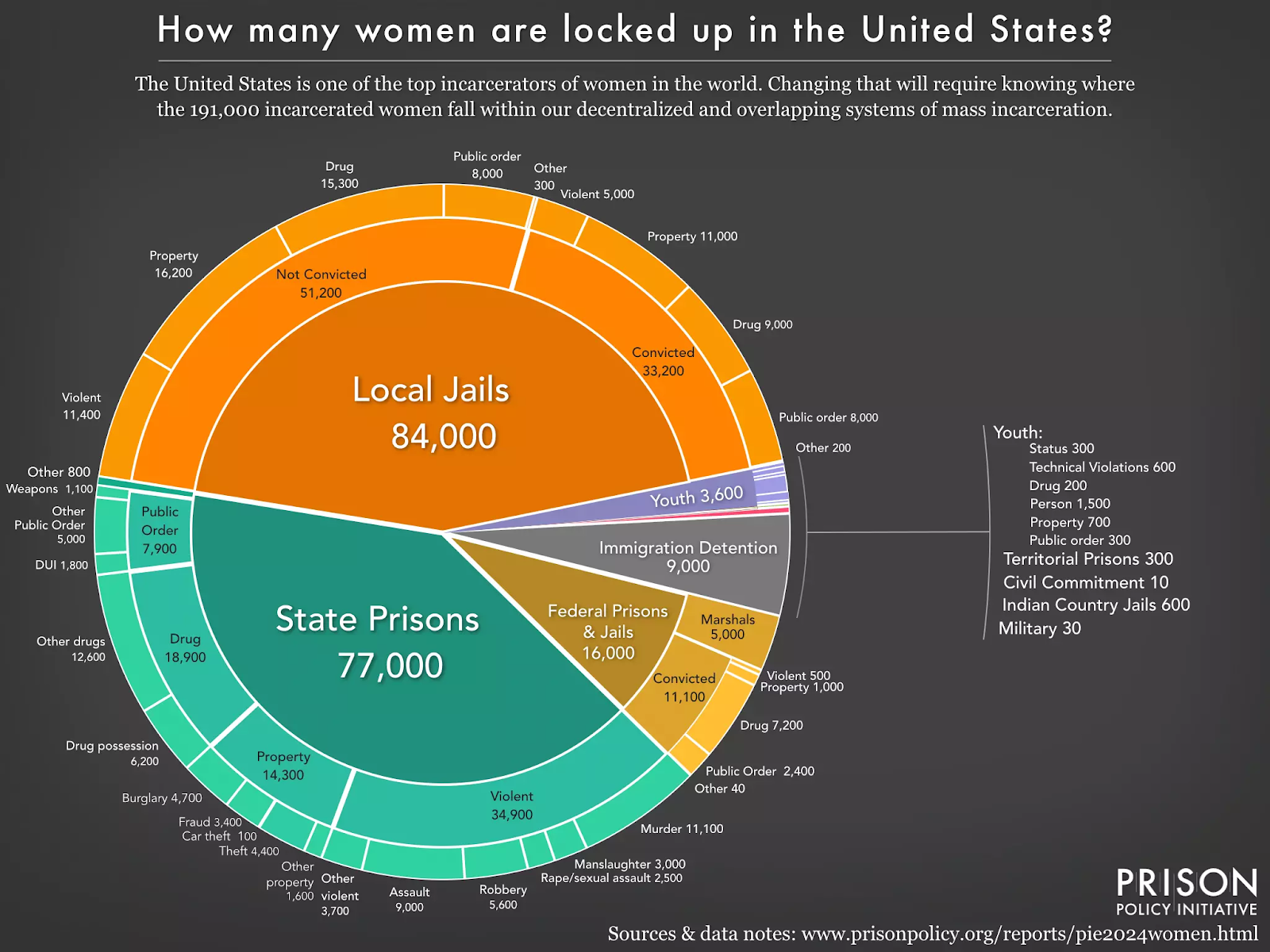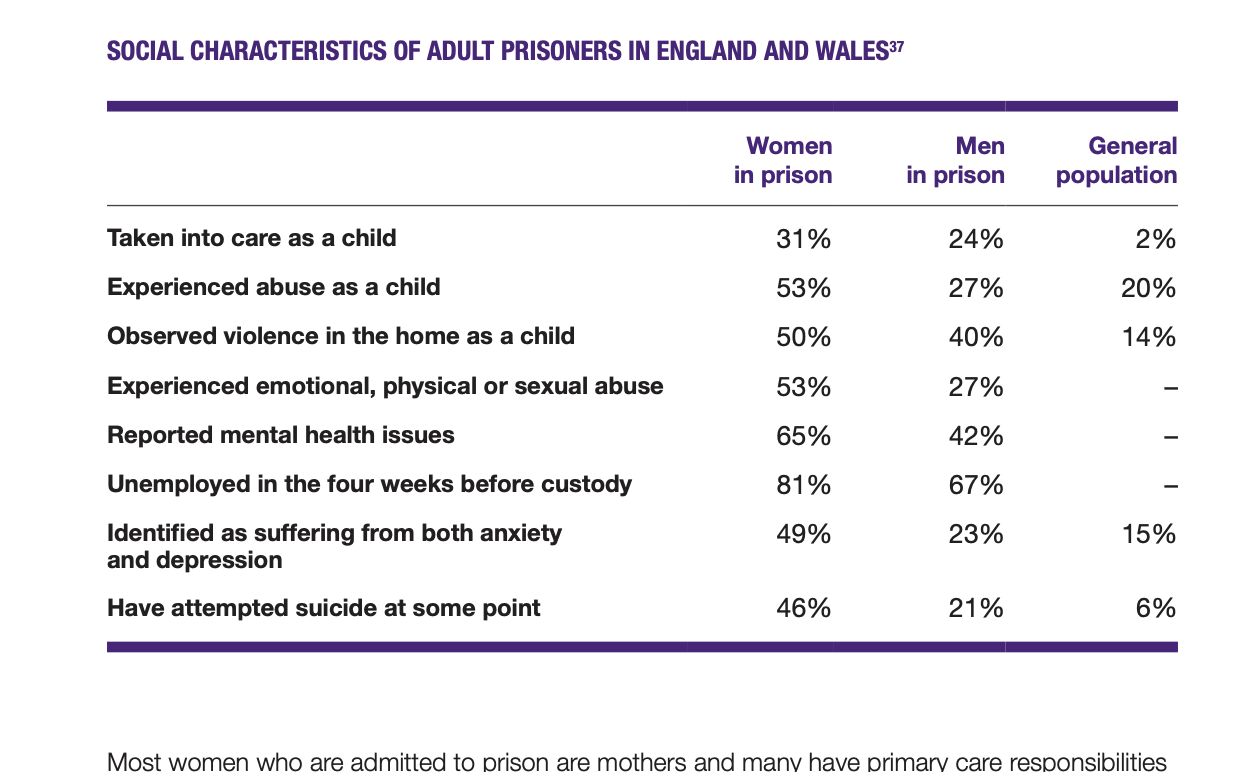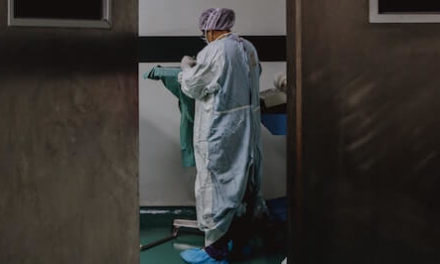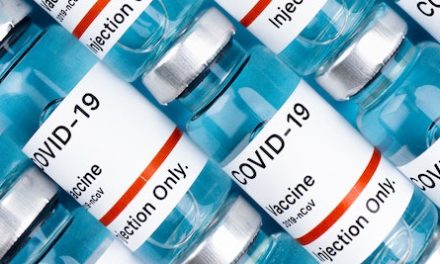Abstract
When it comes to prison incarceration, aspects of female incarceration have been widely overlooked and require immediate acknowledgement. Female prisoners are made to fit into prisons designed primarily with men in mind. These prison systems often ignore the gender-specific needs of female prisoners and refuse to provide essential services, such as prenatal care or sanitary pads during monthly menstrual cycles. Through a robust socio-legal analysis of the gender-specific prison segregation, this paper sheds light on a perilous prison world where women are caught in a web of physical violence, where children are separated from imprisoned mothers, where women are deemed as mentally “psychotic” and sent to psych wards, and pregnant women stripped of their newborns. Why have the legal systems allowed for this harmful treatment to go on? Why have prisons not prioritised the rehabilitation and the needs of these women? This research paper explores the gendered pains of imprisonment in prison systems across the world.
Introduction
“Deviant men have been constructed as criminals, while deviant women have been constructed as insane.” (Davis, 2003)
The idea of being “insane” or “psychotic” has always been largely associated with incarcerated females compared to their male counterparts. While the lawful purpose of prison has been to punish offensive behaviour, women who commit crime are considered much more dangerous and “abnormal” compared to men who commit crime. Women in state prisons are twice as likely than men to be incarcerated for a drug or property offense, and many have dependent children who are affected by maternal imprisonment. Many women are victims of much more serious offences than they are accused of committing. Studies suggest that a large proportion of incarcerated women have faced sexual, psychological, and traumatic abuse from a young age (Budd, 2024; Saxena & Messina, 2021; Kubiak et al., 2017; Tripodi & Pettus-Davis, 2013). This male-centric prison complex is not built to cater to the gender-specific needs of female prisoners. Evidence suggests that prisons around the world refuse to provide essential services catered to their needs, such as prenatal care or sanitary pads during monthly menstrual cycles. This paper investigates the unique challenges faced by women in prisons compared to their male counterparts, and examines how these challenges impact their mental and physical health.
This paper is divided into four sections, each one focusing on a specific aspect associated with female incarceration. The first section provides a general overview of women in prison, exploring prison structure, prison staff sexism, and the influence of prison environment on isolation and segregation. The second and the fourth sections focus on the gendered pains of imprisonment, highlighting the physical and mental health struggles of female prisoners. The third section sheds light on the issue of pregnancy within prisons, emphasising the incarcerated woman’s struggle to access adequate care to ensure a stable life for her child. The paper concludes by laying emphasis on reform policies and advocates for urgent action to improve the conditions of women prisoners.
Research Questions
This paper investigates the unique challenges faced by women in prisons and examines how these challenges impact their mental and physical health.
The main research questions for this paper are:
- What are the most common crimes for which women are convicted, and how are they treated within the judicial prison system?
- What are the primary physical and mental health challenges faced by incarcerated women?
- What is the impact of prison conditions on the reproductive health of incarcerated women, and how do these conditions affect their rights and access to healthcare?
Throughout this paper, the authors explore how the experiences of women in prison differ across various countries and cultures and attempt to shed light on how to improve prison conditions globally.
I. An Overview of Female Incarceration
The architecture, policies and overall structure of a prison reflects an outdated understanding of a female prisoner’s living condition. Globally, women represent between 2% and 10% of national prison populations, but their incarceration numbers are increasing rapidly. Throughout the world, women’s imprisonment is growing at a disproportionately higher rate than men (OHCHR, 2017). Persisting gender-discriminatory laws, poverty, and other related obstacles increase the chances of a woman being detained. Women offenders often lack the resources to be able to pay for legal representation and face a hard time finding alternatives to custodial sentences, such as fines or bail (Kajstura & Sawyer, 2024).
The following graph from the Prison Policy Initiative shows how many women are locked up in prisons. The United States is one of the top incarcerators of women in the world, housing over 190,000 female prisoners in local jails, state prisons, federal prison, immigration detention and youth detention centres. Most women sent to local jails are convicted for crimes related to property, drug, violence, and public order-related offenses. Of the 77,000 women sent to state prisons, approximately 35,000 are convicted for violence and 19,000 for drug offenses. In contrast to the total incarcerated population of 2024, where state prisons hold over twice as many people as jails, most women end up in jail. About one third (32%) of convicted incarcerated women are held in jails, compared to 13% of all people incarcerated with conviction. This reflects the distribution of offenses between men and women, especially economically, as most women are stuck in jail still awaiting trial as the average bail amounts to over a woman’s full-year’s income.

Additionally, women are victims of “moral” offenses, such as violation of dress codes, adultery, extramarital sex, or running away from home to escape forced marriage and domestic violence. Many countries also arrest women for abortions, including in situations of rape. The incarceration of female prisoners and immoral offense allegations can lead to devastating effects on their families, especially growing children. The Federal Probation journal, published in 1987, states that women are treated the same as or more harshly than men (Johnston, Kennedy & Schuman, 1987), an outcome consistent with the “evil woman thesis” – a theory that hypothesises that when women are imprisoned, they no longer adhere to their gender stereotypes, hence punishment should be more severe. In some states, women are disfavoured as criminal defendants, and legislation prescribes severe sentences for women for the same offence as men. In light of the fact that most women react violently to the actus reus of rape from men, the justice system fails to notice that that this serves as a measurement of protection against further physical infliction, rather than criminal intent from the female.
The imprisonment of females can also be influenced by the differing political, cultural, and legal societies that they live in. For example, until April 2007, women in Uganda that were found guilty of adultery could be incarcerated, yet men who committed similar crimes would face no punishment (Benedetti & Kijo-Bisimba, 2012). A study analysing incarcerated women in Afghanistan found that many of the women imprisoned were innocent but had been convicted because they had no legal assistance or because they had been forced to confess (Critoph, 2019). Others had been used or framed by male relatives or were arrested because they were with their husbands or partners when the crime was committed. A similar situation occurred for females in Thailand, where females were convicted for smuggling drugs across international borders. In reality, these incarcerated women revealed life histories affected by mental issues, physical trauma, and social inequalities, such as low levels of education and lack of employment that caused them to smuggle across borders on someone else’s orders. Most women of colour in prison are manipulated into committing an offence, claiming guilt for an abuser’s crime, or committing physical assaults in response to psychological victimisation.
Prison Structure: An Architectural Perspective on Gender-Specific Needs
As women are put into different prisons based on the type of crime they have committed, an important aspect that affects them in the criminal legal system is prison structure, originally constructed from a male-centric mindset. Prison architecture heavily influences not only the physical state of imprisoned women, but also how they behave psychologically. When prison models were first constructed, architects and civil authorities gave little importance to demarcate and classify the different needs of male and female prisoners in prisons (Georgiev, 2016). Hence, it is common to see prisons built as stereotypically masculine, so the architectural elements that define it (walls, bars, cells) are typical of buildings intended for men (Basalo, 2018). Consequently, most women’s prisons are designed with these male preconceptions. While the architectural programme states the characteristics that a facility for women must meet, most of the time, decisions on female prison structure are made resorting to solutions and forms that are typical of men’s prisons. While female inmates have a lower rate of inmate-to-inmate violence, their severe suicidal and mental health issues exhibit a high degree of behavioural risk and self-harm, making it imperative that suicide-resistant furnishing and fixtures are applied to places without guard supervision (Maiello & Carter, 2015). Arguably the most important aspect for mothers with families is proximity to their children, yet even this may be denied by officers, specifically males. Constant domination from prison officers and instances of rape and sexual violence reflects the poor surveillance system in female prisons. This also highlights the need to advocate for stronger protection and more robust gender-specific programmes and facilities for female prisoners.
It is important to take steps into fixing the issue of prison design. One example of this is viewed in Limerick, a new women’s prison that opened in January 2023. Limerick offers a calm, natural healing environment for women that comforts their mental state in a pressurising environment.

Source: Yvonne Jewkes, 2022.
Architecturally, Limerick prison resembles aspects of Scandinavian correction facilities, fostering a light, bright, open reception area, expansive living spaces, and no bars on any of the large windows. The new facility has greatly improved from the old Limerick prison, where women were held in “dank, catacomb-like cells” (Jewkes, 2022) built in 1821 and exercised in a small concrete yard topped with thick wire mesh and razor wire. The new Limerick architecture could prove effective at preventing suicide and self-harm by being a pleasant, welcoming environment, rather than an abhorrent, dehumanising institution. The modern features and bright, inviting layout are comparable to a well-designed budget hotel or student hall. The prison is trauma-informed, not just for the women held there, but also for their relatives. The visiting room has a “glazed wall” overlooking the gardens and includes outdoor space and a play area for children. Inside, it has seating in cozy booths to allow private conversation for inmates to feel a sense of protection and connection. This structure offers women a new approach to taking control of their lives in prison, making them feel more welcome in a more thoughtfully planned prison design (Jewkes, 2022).
Despite the implementation of new prison architectures with the hope, like that of Limerick, to help imprisoned women reintegrate into society, the issue of violence and mental health abuse still looms in many other prisons. Research on 13 women prisoners at Idrizovo prison in the Republic of Macedonia found that nearly all the women had experienced serious violence at the hands of their husbands or partners, with most of the women reporting that they felt safer inside prison than outside. This unsettling reality underscores the complex and tragic circumstances that many incarcerated women face. The research also found that most of the crimes the women committed were related to their previous abuse. The direct link between committing crimes and a history of abuse the incarcerated women experienced further raises concerns. Many of these women may have acted in self-defence or because of the emotional and psychological damage that the abuse inflicted on them over time. This reality requires a more complex conception of justice, one that considers the circumstances surrounding their behaviour and the need for assistance, as opposed to simply penalising.
The next section focuses on the physical health challenges that female prisoners encounter when entering a prison environment and highlights how female incarceration is deeply embedded in a cycle of violence.
II. Incarcerated Women and the Cycle of Violence
This section focuses on the unique physical health challenges faced by incarcerated women. Women in prison face many serious physical health issues that stem from their unique vulnerabilities. In contrast to men, incarcerated women frequently deal with concerns of abuse, assault, menstrual hygiene, substance use, and reproductive health, all of which can have a significant impact on their general well-being. Many prison systems lack the necessary resources to meet these needs, which has a detrimental effect on female inmate’s health.
A prevalent issue that significantly affects the well-being of women before, during, and after prison is abuse and violence. A history of abuse particularly affects the physical well-being of incarcerated women. Abuse-related trauma frequently shows up as gastrointestinal issues, persistent pain, and other stress-related illnesses. Unfortunately, prison environments frequently fail to offer safe and supportive spaces for women who have undergone such trauma, therefore, creating a re-traumatising environment. Based on research published in the National Library of Medicine, in general, the patterns represent that prison is a harmful place for many of the people residing there, that people inside prison have high percentages of childhood victimisation, that people who were victimised inside prison by other inmates and/or staff are more likely to have experienced victimisation prior to age 18, and that people who experience sexual victimisation inside prison are also very likely to experience physical victimisation (Woldd, Shi & Siegal, 2009). Reliving prior abuse can be physically and psychologically challenging, and the possibility or occurrence of violence inside the jail contributes to these health problems, creating a cycle of poor health outcomes. As depicted by the diagram below, research conducted on prisoners shows that women statistically face noticeably higher percentages of abuse before imprisonment, further complicating the physical and psychological toll of incarceration. This pre-existing trauma deepens the impact of the violence and neglect they experience while incarcerated.

Source: Prison Reform Trust, Bromley Briefings Prison Factfile, Autumn 2018.
Although uncalled for, abuse is often used as a justified tool for intimidation or fear to enforce discipline. The reality is that this abuse extends beyond mere discipline – it is a systematic and pervasive issue that leaves deep physical and mental scars on the women who endure it. This violence takes various forms, including inmate-on-inmate attacks, assaults by prison guards, and even self-inflicted harm. Incarcerated women are more susceptible to acts of violence, both planned and unforeseen, which are frequently motivated by a combination of factors including gang rivalry, overcrowding, and the complexity of power relationships that exist inside the jail. Because of its high-stress environment and limited resources, overcrowding is especially problematic because it increases the risk of violent occurrences (Penal Reform International, 2021).
The prison’s layout adds to the complexity of this scenario. Prisons with indirect supervision, where guards monitor inmates from enclosed booths, often have blind spots that allow violent acts to go unnoticed, putting women at greater risk. Nevertheless, 70% of corrections officers in, for instance, the United States of America’s federal women’s correctional facilities are men (Konigsberg, 2022). Even in prisons with direct supervision, where guards are more physically present, another level of risk is created when male guards are stationed in female jails; not only are women at risk from other prisoners’ aggression, but they can also be sexually harassed and assaulted by the guards. Despite numerous lawsuits and reports detailing rampant sexual abuse of women in prison, the problem continues unabated. A study conducted in US in 2004 highlights that of the 539 corrections officers and prison staff involved in 508 substantiated sexual abuse claims, only 36% were recommended for prosecution (Beck & Hughes, 2003). These sexual abuse claims included watching female prisoners undress, inappropriate body searches, sexual assault, rape, etc. Women who try to report these acts often encounter intimidation and punishment intended to silence them. Abusers may threaten victims by using personal information from their files, such as limiting their time for entertainment or seeing loved ones (Beck & Hughes, 2003). The underreporting of staff-on-inmate sexual violence is a result of this fear of punishment, which makes the issue seem less common than it actually is. Even in cases where victims come forward and have their claims taken seriously, prison employees frequently act with a high degree of impunity. Victims’ attempts to obtain justice were quickly dismissed because of regulations like the Prison Litigation Reform Act, which made it more difficult for prisoners to file lawsuits by allowing correctional facilities to handle the matter before litigation. This continues to be the situation even today. For instance, former prisoner and survivor, Briane Moore, revealed how an officer had sexually assaulted her when she was being held at a federal facility in West Virginia. She claimed that the jail officer, a captain, would drag her into private areas so he could abuse her without being caught by security cameras. “I knew he had the power to prevent me from being transferred to a prison closer to my family, closer to my daughter,” Moore said. “He was a captain with total control over me. I had no choice but to obey.” The US Bureau of Prisons has opened 5,415 cases alleging sexual abuse by federal employees from 2012 to 2022 (Owen, 2022).
Women who are assaulted in prison often suffer from untreated injuries that lead to chronic pain and long-term medical complications, such as musculoskeletal disorders and disability. Moreover, contracting sexually transmitted infections (STDs) such as syphilis, chlamydia, gonorrhea, HIV, and hepatitis B and C becomes likely. These infections cause major reproductive health problems, such as infertility, pelvic inflammatory disease, and persistent pelvic pain if left untreated. These dangers are further increased by the crowded and frequently unhygienic circumstances in jails. Additionally, the stress of recurring assaults weakens their immune systems, leaving them more vulnerable to illnesses. Furthermore, these infections can be transmitted from the mother to the child either during pregnancy or childbirth, resulting in significant health complications for newborns, including congenital illnesses or life-long disabilities. The risk is increased by the absence of adequate medical treatment and prenatal assistance in prison, which creates an ongoing pattern of poor health outcomes for both jailed women and their newborns. The next section delves deeper into the struggles of pregnant women and examines the experience of early motherhood in the prison system.
III. Incarcerated Pregnant Women and the Challenges They Face
Incarceration is a formidable challenge for any individual, but for pregnant women, it presents more severe difficulties. Their treatment has drawn increasing scrutiny, leading to discussions about the adequacy of current policies, the impact of prison conditions on maternal and foetal health, and the ethical implications of imprisoning expectant mothers. It is indisputable that women in prisons worldwide should have access to high-quality maternity care, equal to that provided for all other women living in the community. The prison system itself must ensure that imprisonment does not compromise maternal or neonatal care of the pregnant incarcerated women and their unborn children.
The reality, however, is quite different. The policies governing pregnant women in prison vary widely internationally, reflecting a patchwork of standards and practices particularly unacceptable in the developed countries of the world. In the United States for example, federal and state regulations offer differing levels of care. The U.S. Bureau of Prisons mandates that pregnant women receive appropriate prenatal care in specialised medical facilities. However, the implementation of these policies in a system originally designed for males is inconsistent. Some states provide minimal prenatal care and do not ensure the necessary medical attention, resulting in significant disparities in health outcomes for pregnant inmates.
Moreover, the conditions within typically overcrowded prisons without adequate medical facilities result in inadequate medical attention for a significant number of all women in prison. This exacerbates the challenges faced by pregnant women, affecting their health and the well-being of their unborn children. The World Health Organisation has stated that the needs of incarcerated pregnant women are not considered in the prisoner care programme. Chronic stress, widespread in prison, is linked to problems such as premature birth and low birth weight. The prison system must ensure that imprisonment does not compromise maternal or neonatal outcomes.
Pregnant women are vulnerable and marginalised in multiple ways. Given the mother’s status as an offender, pregnancy and birth are frequently handled in ways considered unacceptable in any other circumstance. In some American jurisdictions, during transport, labour, delivery and post-delivery, women are frequently shackled with handcuffs – a practice remaining from protocols designated for male institutions to prevent escape and protect personnel from physical harm (The Vermont Statutes, 2013; Clarke, 2013). The risk of a woman escaping and inflicting damage during the physical and emotional stress of labour and delivery is highly unlikely. The birth of a child – a momentous, joyful experience for many – is turned into a traumatic event for incarcerated women resulting from the lack of mobility and the psychological distress of holding their newborns while chained to a hospital bed. At the same time, shackling increases the risk of injury to mother and foetus (Committee on Health Care for Underserved Women of American College Obstetricians and Gynecologists, 2019). The brutal treatment of incarcerated pregnant women could be seen as a direct contravention of the Supreme Court’s 1976 ruling that “deliberate indifference to serious medical needs of prisoners” violates the Eighth Amendment’s prohibition on cruel and unusual punishment (Rold, 2008). A prison sentence removes the individual’s right to freedom but does not remove their basic human right to be always treated humanely.
Reproductive rights do not end with the birth of the child; society must uphold the right of a competent parent to raise her own children, and a woman’s incarcerated status alone does not indicate incompetence. Although one may argue that pregnant women who commit crimes should be held accountable, it is essential to consider the unique needs of this vulnerable population and the potential harm to both mother and child. Incarceration can jeopardise prenatal care, disrupt early bonding, and potentially lead to long-term emotional and developmental issues. The separation of mothers from their newborns after birth is further complicated by ethical issues surrounding the question of whether the baby should stay in the hostile environment of prison (Clarke, 2013).
What is certain is that pregnant women who are incarcerated suffer not only the punishment of being imprisoned, but also an inevitably difficult and stressful pregnancy, followed by the enduring trauma of separation from their babies. It is also a matter for ethical debate whether exposing unborn babies to the dangers of jailing their pregnant mothers constitutes the undeserved and unacceptable punishment of a blameless infant, regardless of the severity of the mother’s crime.
In 1989 the United Nations noted “in all actions concerning children… the best interests of the child shall be a primary consideration” (United Nations Office of the High Commissioner of Human Rights, 2019). Specialised prenatal and postnatal care programmes including child-friendly and stimulating Mother and Baby Units (MBUs) should be implemented within prisons. However, in countries such as the United States, MBUs are severely limited while tens of thousands of children of incarcerated mothers need childcare at any moment in time (Glaze & Maruschak, 2010; Maruschak & Bronson, 2016).
Overall, the current policies and conditions for pregnant women in prison reveal a system in need of significant reform. Inconsistent regulations, inadequate prenatal care, and harsh prison conditions all contribute to negative health outcomes for both mothers and their unborn children. The ethical implications of incarcerating pregnant women further underscore the need for a re-evaluation of current practices. To address these issues, it is crucial that prisons adapt to provide better medical care, support maternal and infant well-being, and consider alternatives to traditional incarceration for pregnant women.
IV. Incarcerated Women and the Mental Health Crisis in Prisons
The synthesis of both pre-existing conditions and prison environments are the key contributors to the deteriorating mental health of incarcerated women. Due to the exposure of assault and violence, the long-lasting psychological consequences are extreme and should not be ignored. Studies indicate that over 66.7% of women within Brazilian prisons exhibit symptoms of common mental disorders, which include depression, anxiety, and post-traumatic stress disorder (PTSD) (Audi et al., 2018). With these growing rates of mental health issues, the systems in place must be questioned. Is it as plain as systematic neglect? And if so, how can these systems be improved to benefit them? What methods should be implemented to uphold the standards of mental health services within women’s prisons?
The leading cause contributing to the deterioration of women’s mental health is trauma, both within and before the prison. Trauma is the experience of being physically or emotionally in distress during an event (Mind, 2023). Studies have shown that these experiences leave long-lasting scars on people’s mental health and can even cause more mental health issues. For example, one condition that is developed from trauma is post-traumatic stress disorder (PTSD) (Rothbum, 2021). PTSD is an anxiety disorder that causes intense fear, helplessness, and flashbacks, which are painful to relive for the victims (National Institute of Medicine, 2024). Most incarcerated women already suffer with pre-existing conditions. However, the experiences they face within these jails have only made things much worse for them. For example, the social isolation of a jail cell can further intensify one’s feelings of anxiety and depression, and the added component of being imprisoned so far away from family can worsen the previous conditions (Zitzow, 2010). In addition, there have been recordings of incarcerated women describing the uneasy feeling they get when supervised by male authority figures, exacerbating the harmful effects of mental illness when in a risky or unreliable circumstance. As indicated in the ‘Women’s Pathway to Jail’ study, the women most likely to be repeat offenders are women with SMI (serious mental illnesses) and who have experienced previous trauma (Lynch, DeHart, Belknap & Green, 2013). This study also indicates that more than half of the participants have not been able to access treatment. Even though the study shows that the levels of SMI and PTSD present within the prisons require additional mental health assessments and treatments (Lynch, DeHart, Belknap & Green, 2013), no such provisions have yet been made to tackle the mental health crisis in prisons.
There are multiple systematic barriers and challenges which make it difficult for incarcerated women to receive the care needed. The insufficient funds for mental health services within prisons can result in inadequate staffing, in general, and more specifically, when it comes to mental health professionals, which in turn prolongs the treatments required (UNODC, 2009). Along with the limited resource accessibility, it is no wonder that these women are not getting the help needed; the constraints put women with complex mental health issues at major risk.
Overall, the international human rights laws provide a framework that protects general health, which includes mental health. Prisons are required to respect the human rights of those individuals who are housed within the jails. Making sure that women have access to quality mental health care is part of this. This must be done by providing appropriate access to mental health care and addressing the root cause of the issues. ‘The United Nations Standard Minimum Rules for Treatment of Prisoners’, better known as the ‘Nelson Mandela Rules’, are a stable set of regulations that reiterated the fact that the purpose of imprisonment is to protect society against crime and reconviction. Rule 2 of the Nelson Mandela Rules (updated in 2014) states that prisons must “ensure that prisoners with physical, mental or other disabilities have full and effective access to prison life on a fair basis and are treated in line with their health conditions”. Another significant set of rules that also stresses these conditions are the UN’s Bangkok Rules, also known as “the treatment of women prisoners and non-custodial measures of women offenders”. These rules were created by Penal Reform International (PRI) and the Thailand Institute of Justice (TIJ) after witnessing the mistreatment of women. Over the years, as the rates of women imprisonment grew, the training had to change. Since at the time, the prison officers were so used to male prisoners, there was a lack of understanding of the gender perspective (TIJ Just Right channel, 2024). So, these courses were created in order to merge gender sensitisation into the prison culture around the world. The Bangkok Rules strive to make sure that the correctional officers working at prisons understand the complexities that incarcerated women face, and to make sure that they focus on their social well-being as well. However, even though these rules were implemented to improve prison conditions, including the mental health of prisoners, statistics reveal a different truth. A growing number of studies shed light on the mental health crisis in prisons and how it impacts incarcerated women, and more and more news articles and reports are published, urging countries to take prison reforms seriously, yet nothing changes.
Conclusion
To conclude this paper, the horrendous conditions of women’s prisons continue to negatively impact the health, dignity, and rights of incarcerated women. This research paper has covered many significant points, highlighting the physical and mental health challenges, the violence women experience, the lack of adequate reproductive care, and the negative impact of prison structure and policies which have been designed from a male-centric perspective. These findings present a troubling picture of how the prison system systematically fails women, in turn, reinforcing a cycle of oppression rather than offering any possibility of rehabilitation or redemption. The main thesis is that prison conditions for women adversely affect their health, both physical and mental, while also violating their rights. From inadequate medical care to exposure to violence and abuse, incarcerated women experience a range of hardships that add to lasting physical and psychological harm. Moreover, the denial of basic reproductive health services, such as prenatal care and menstrual hygiene products, further intensifies their suffering, showing the neglect and disregard for their well-being while in prison.
Each section of this paper has elaborated on critical aspects of the gendered experience of imprisonment. The first section provided a broad overview of how prison structures and policies often disregard the specific needs of women, leading to isolation, segregation, and further disempowerment of women. Then we delved into the exploration of the impact of physical and mental health challenges, mainly the ways in which abuse, substance use, and sexual assault add to the trauma of incarceration. There has also been discussion on the issues of pregnancy in prisons, demonstrating how inadequate access to reproductive health care can have lifelong consequences for women and their children. These prison conditions have long-term effects, and their impact on women continues even after release, showing that the harm done inside prisons extends far beyond the walls of the institution.
Angela Davis’s quote, “deviant men have been constructed as criminals, while deviant women have been constructed as insane,” relates powerfully to the context of this paper. This is due to the fact that women who deviate from societal norms are not only criminalised but also pathologised, often perceived as mentally unstable rather than as individuals capable of rehabilitation. This perspective feeds into the systemic discrimination that incarcerated women face, where their actions are judged more harshly, and their needs are dismissed as irrational or undeserving of attention. The portrayal of deviant women as “insane” is used to try and justify the inhumane conditions they endure in prison, reinforcing the belief that they are beyond redemption and unworthy of care. This gendered view of criminality versus insanity really highlights the biases that shape the prison system’s treatment of women, ultimately contributing to the systemic violations of their rights.
Addressing these wrongful acts requires urgent action from policymakers, human rights organisations, and the public. It is important that the prison system be reformed to meet the specific needs of women, ensuring that they have access to proper healthcare, protection from violence, and environments that support their rehabilitation and reintegration into society. Policymakers must prioritise the implementation of policies that are designed for women specifically, including better mental health services, reproductive care, and family reunification programmes. Furthermore, human rights organisations must continue to advocate for the rights of incarcerated women, holding governments accountable for the conditions within prisons and pushing for greater transparency and oversight. Finally, as we investigate the harsh situation faced by incarcerated women, it is essential to recognise that justice and dignity are fundamental human rights that must be upheld for all, regardless of gender or circumstance. As Nelson Mandela famously said, “it is said that no one truly knows a nation until one has been inside its jails. A nation should not be judged by how it treats its highest citizens, but its lowest ones”. The treatment of women in prison reflects the values of our society and humanity, and it is our responsibility to make sure that they are treated with the respect and care they deserve. Only by addressing the failures of the prison system can we begin to change these injustices and build a more equitable and just society for all.
Bibliography
Alejo García Basalo, ‘The Design of Women’s Prisons: An Architectural Perspective on Gender-Specific Needs and Realities of Female Prisoners and Main Requirements for Improvement’ in Piet Hein van Kempen and Maartje Krabbe (eds), Women in Prison: The Bangkok Rules and Beyond (Intersentia 2017).
Aleks Kajstura & Wendy Sawyer, ‘Women’s Mass Incarceration: The Whole Pie 2024’ (Prison Policy Initiative, 05 March 2024) < https://www.prisonpolicy.org/reports/pie2024women.html> accessed 15 Aug 2024
Angela Y Davis, Are Prisons Obsolete? (Seven Stories Press 2003)
Audi et al, ‘Common Mental Disorder among Incarcerated Women: A Study on Prevalence and Associated Factors’ (2018) 23(11) Cien Saude Colet. 3587 <https://www.ncbi.nlm.nih.gov/pubmed/30427432> accessed 21 August 2024
Barbara H. Zaitzow, ‘Psychotropic Control of Women Prisoners:The Perpetuation of Abuse of Imprisoned Women’ (2010) 7(2) Justice Policy Journal <https://www.cjcj.org/media/import/documents/psychotropic_control.pdf> accessed 24 August 2024
Barbara Rothbaum, ‘NIMH-Funded Researcher Dr. Barbara Rothbaum Discusses Post-Traumatic Stress Disorder’ (17 June 2021) <https://www.nimh.nih.gov/news/media/2021/nimh-funded-researcher-dr-barbara-rothbaum-discusses-post-traumatic-stress-disorder> accessed 21 August 2024
Committee on Health Care for Underserved Women of American College Obstetricians and Gynecologists, ‘ACOG Committee Opinion no. 511: Health Care for Pregnant and Postpartum Incarcerated Women and Adolescent Females’ (American College of Obstetricians and Gynecologists 2011)
Fanny Bennedetti & Helen Kijo-Bisimba, ‘Women’s rights in Uganda: gaps between policy and practice’ (International Federation for Human Rights, February 2012) <https://www.fidh.org/IMG/pdf/uganda582afinal.pdf> accessed 25 Aug 2024
Janet Johnston, Thomas Kennedy & Gayle Schuman, ‘Gender Differences in the Sentencing of Felony Offenders’ (1987) 51(1) Federal Probation: A Journal of Correctional Philosophy and Practice <https://www.ojp.gov/pdffiles1/Digitization/105796NCJRS.pdf> accessed 22 August 2024
Kristen M. Budd, ‘Incarcerated Women and Girls’ (The Sentencing Project, 24 July 2024) <https://www.sentencingproject.org/fact-sheet/incarcerated-women-and-girls/> accessed 17 Aug 2024
Laura Maiello & Stephen Carter, ‘”Minus the Urinals and Painted Pink”? What Should a Women’s Prison Look Like?’ (Penal Reform International, 09 December 2015) <https://www.penalreform.org/blog/10020/> accessed 29 August 2024
Laura Maruschak & Jennifer Bronson, ‘Parents in prison and their minor children: Survey of prison inmates 2016’ (US Department of Justice, Bureau of Justice Statistics Special Report, March 2021) <https://bjs.ojp.gov/content/pub/pdf/pptmcspi16st.pdf> accessed 24 August 2024
Levy Konigsberg, ‘A Culture of Sexual Violence in Women’s Prisons’ (LevyLaw, 23 Apr. 2024) <www.levylaw.com/blog/2022/12/a-culture-of-sexual-violence-in-women-s-prisons/ > accessed 21 August 2024
Merlin Fulcher, ‘Limerick Women’s Prison: An Architecture of Hope’ (Architects’ Journal, 2022) <https://www.architectsjournal.co.uk/news/limerick-womens-prison-an-architecture-of-hope Accessed 27 Aug 2024> accessed 24 August 2024
Mind, ‘About Trauma’ (Mind, December 2023) <https://www.mind.org.uk/information-support/types-of-mental-health-problems/trauma/about-trauma/> accessed 20 August 2024
Nancy Wolff, Jing Shi & Jane Siegal, ‘Patterns of Victimization among Male and Female Inmates: Evidence of an Enduring Legacy’ (2009) 24(4) Violence and Victims 469
National Institute of Mental Health, ‘Post-Traumatic Stress Disorder’ (National Institute of Mental Health, n.d) Available at: <https://www.nimh.nih.gov/health/topics/post-traumatic-stress-disorder-ptsd> accessed 20 August 2024
Office of the High Commissioner for Human Rights, ‘Women and Detention’ (OHCHR) <https://www.ohchr.org/sites/default/files/Documents/Issues/Women/WRGS/OnePagers/Women_and_Detention.pdf> accessed 21 Aug 2024
Penal Reform International and Thailand Institute of Justice, ‘Guide to the rehabilitation and social reintegration of women prisoners: Implementation of the Bangkok Rules’ (Penal Reform International, May 2019)<https://cdn.penalreform.org/wp-content/uploads/2019/05/PRI_Rehabilitation-of-women-prisoners_WEB.pdf> accessed 23 August 2024
Penal Reform International, ‘Toolbox on the UN Bangkok Rules the Rehabilitation and Social Reintegration of Women Prisoners Implementation of the Bangkok Rules’ (2019) <https://cdn.penalreform.org/wp-content/uploads/2019/05/PRI_Rehabilitation-of-women-prisoners_WEB.pdf> accessed 24 August 2024
Preeta Saxena & Nena Massina, ‘Trajectories of victimization to violence among incarcerated women’ (2021) 9(1) Health Justice 18
Quinn Owen, ‘Former Female Inmates Speak about Widespread Sexual Abuse by Prison Staff’ (ABC News, 13 December 2022) <https://abcnews.go.com/Politics/senate-report-documents-widespread-sexual-abuse-female-inmates/story?id=95157791> accessed 25 August 2024
Shannon Lych, Dana DeHart, Joanne Belknap & Bonnie Green, ‘Women’s Pathways to Jail: Examining Mental Health, Trauma, and Substance Use’ (US Department of Justice, Bureau of Justice Assistance Policy Brief, March 2013) <https://bja.ojp.gov/sites/g/files/xyckuh186/files/Publications/WomensPathwaysToJail.pdf> accessed 24 August 2024
Sheryl Kubiak, Gina Fedock, Woo Jong Kim & Deborah Bybee, ‘Examining Perpetration of Physical Violence by Women: The Influence of Childhood Adversity, Victimization, Mental Illness, Substance Abuse, and Anger’ (2017) 32(1) Violence Vict. 22-45
Stephen J Tripodi & Carrie Pettus-Davis, ‘Histories of childhood victimization and subsequent mental health problems, substance use, and sexual victimization for a sample of incarcerated women in the US’ (2013) 36(1) International Journal of Psychiatry 30-40
Tihomir A Georgiev, ‘Prison Architecture for Females’ (Master’s dissertation, University of Malta 2016) <https://www.um.edu.mt/library/oar/handle/123456789/77443> accessed 18 August 2024
TIJ Just Right Channel, ‘Introducing the Training on the Management of Women Prisoners (the Bangkok Rules Training)’ (February 2017) <https://www.youtube.com/watch?v=zSBXpJu5X2U> accessed 21 August 2024
United Nations Office of the High Commissioner of Human Rights: ‘Convention on Rights of the Child’ <https://www.ohchr.org/en/professionalinterest/pages/crc.aspx> accessed 24 August 2024
United Nations Office on Drugs and Crime, ‘The United Nations Standard Minimum Rules for the Treatment of Prisoners an Updated Blueprint for Prison Management in the 21st Century’ (2014)<https://www.unodc.org/documents/justice-and-prison-reform/Brochure_on_the_UN_SMRs.pdf> accessed 24 August 2024
United Nations Office on Drugs and Crime, ‘Women’s Health in Prison: Correcting gender inequality in prison health’ (World Health Organisation, 2009) <https://www.unodc.org/lpomex/uploads/documents/Publicaciones/Prevencion-del-delito-y-justicia-penal/WHO_EURO_UNODC_2009_Womens_health_in_prison_correcting_gender_inequity-EN.pdf> accessed 24 August 2024
Vermont Statutes, title 28, chapter 11 ‘Supervision of Adult Inmates at the Correctional Facilities’ <https://casetext.com/statute/vermont-statutes/title-28-public-institutions-and-corrections/chapter-11-supervision-of-adult-inmates-at-the-correctional-facilities> accessed 17 Aug 2024
William J Rold, ‘Thirty Years After Estelle v Gamble: A Legal Retrospective’ (2008) 14 Journal of Correctional Health Care 11.




